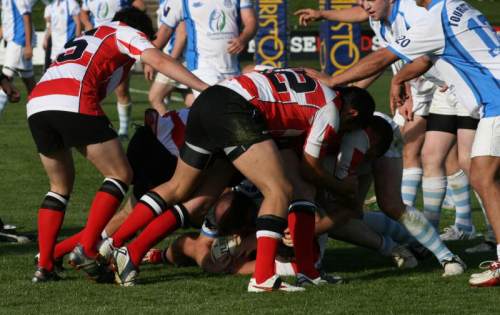I’d had been looking forward to this tournament all year, and not only because I love rugby playing women … uh, I mean coaching them … I continue to coach the female game for several reasons, and one is that without all that bulk and bullheadedness, women are more likely to look for space than try and run someone over. For anyone who watched the whole tournament, this was again proved to be true. There were some fantastic tries on offer, and well-worked ones too which featured clever running lines and deft handling. When it all came down to it, the two most dominant sides – even heading into the tournament – England and New Zealand found each other again squared off in the final. For those who hadn’t watched any WRWC matches, this might not have given them the impression I’d mentioned earlier about a free-flowing, attractive brand of open rugby, but what rugby final is ever that?
Praise be to the IRB for streaming 12 matches from their site and putting up a massive highlights package of that final:
One thing I will address is how a lot of people have been criticising the referee’s handling of the final …
I’d watched every pool match – every match, actually – up to the final, and don’t think Corrigan was inconsistent with the way the games were reffed by anyone throughout. The tempo was set in the encounter between Australia and Wales, and really every team should have ‘adjusted’ then if not before because the directives about rolling away and releasing the tackled player have been in place for a while. After watching that game, I watched a 3N match and it struck me how different general play looked. From one that was relatively clean and free from penalisable infringements at the break down, to one where they were rampant and the ref could only address the ones which were most blatant while trying to be consistent. The women’s game was the ‘cleaner’ of the two.
My impression of the final was that Corrigan gave plenty of warnings and certain players didn’t heed. In the cases of the yellow cards, each player had done something to slow down play – which is what the IRB has been focusing on all year. I’m just a beginning ref, so might not be the best to comment, but on review of the ‘penalty try’ that wasn’t, McLean was there so quickly to clean up the charge down that maybe only a penalty should have been called? I’d like to hear the thinking on that one – but the rest of the match seemed pretty fair to me.
With these new directives strictly enforced, the game will open up – as the last few Tri-Nations matches have – and flow a lot better as defenders are prevented from spoiling quick ball. Last year, players were always flopping on the wrong side of the ruck, forcing scrum halves to tip toe around them (buying time for defenders to get organised); persisting with hands in the ruck and going off their feet to the wrong side again to do so; and the whole issue with the tackler having to release before playing the ball may have cut down on some impressive turnovers, but those were hardly fair to the ball carrier who never had a chance to play the ball with someone holding/lying on top of them. If you’ve watched any of the last few Tri-Nations matches, and remember what they were like last year, you’ll note how wide open the game has become as quick ball tends to translate into more people on their feet (i.e. less having to go in to clean up a messy ‘ruck’), and more opportunities in attack as defenders haven’t the time to get organised.
It’s a good thing.






